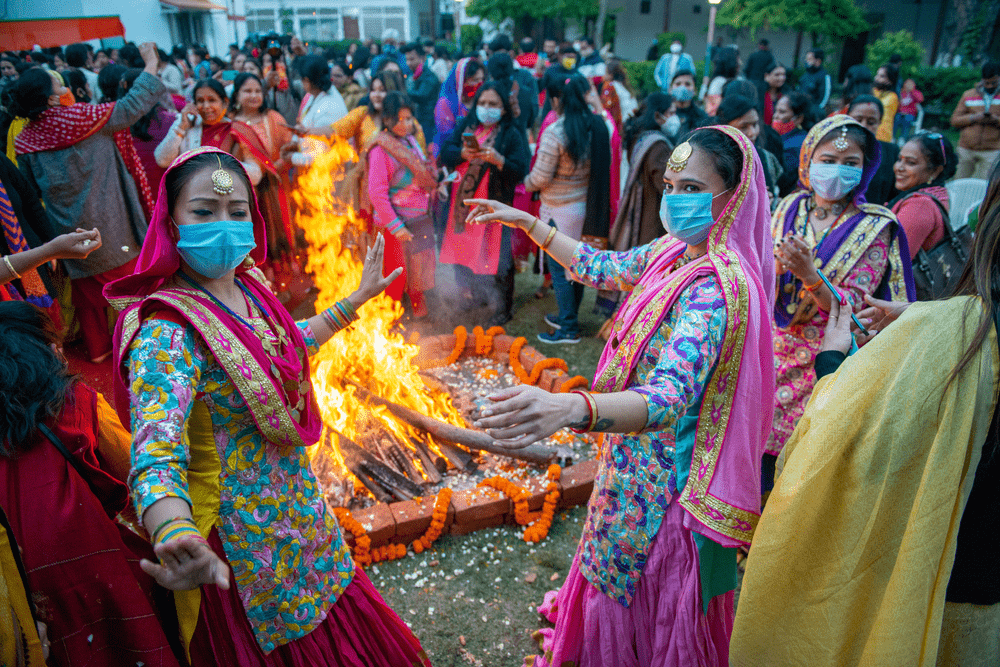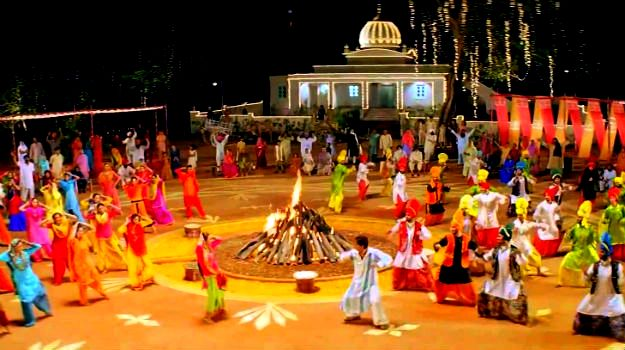Lohri is celebrated every year on 13th of January. It is a festival to worship fire. In North India, the Lohri Festival is observed with considerable fanfare. This is when the Earth begins its journey toward the sun, ushering in the auspicious month of Uttarayan. Since it symbolizes fertility, the first Lohri is significant for newlyweds and their newborn children. People congregate around the bonfire at night and toss popcorn, til, and puffed rice onto the flames. We offer prayers for wealth and plenty to the bonfire. Folks dance and sing traditional tunes to be happy.
HISTORY OF LOHRI
Lohri is a cheerful occasion to rejoice with family and friends over gur and peanuts, music, and the warmth of a campfire. A week before Lohri, children start gathering firewood, hunting for logs that will burn well. The neighborhood is united by a friendly rivalry, and everyone enjoys building the biggest and most spectacular bonfire in their neighborhood.
On this chilly winter's evening, during Lohri, a ring of warmth envelops the people as the bonfire burns brightly in the dusk. The wood crackles and burns and the people gather around, their faces glowing red and gold. In essence, Lohri is a festival honoring the Sun god. Mother Earth receives warmth from the Sun's new alignment as it advances towards the Uttarayan. The seeds that lay dormant for the want of heat, now sprout forth.
Every household contributes sweets made of til and gur, peanuts, tilchowli, and many other mouthwatering home-baked treats to the community's major celebration of Lohri. In addition to praising this auspicious period of the month, the Guru Granth Sahib promises blessings to people who meditate in front of a fire. When new newborns are taken around the bonfire on Lohri, the highest point of the winter, it is seen to be extremely significant.
They offer til (ginger), moongphali (peanuts), and chirwa (beaten rice) to the blazing embers while praying for prosperity. A good Lohri is said to determine the mood of the upcoming year; the more cheerful and abundant the celebration, the more prosperous and peaceful the coming year will be. A few individuals thought Holika and Lohri were sisters. Lohri endured and is still alive, but the former disappeared into the fire.
In addition to symbolizing a collective thanksgiving to nature, symbolized by the Sun god, the customs and festivities surrounding Lohri also exemplify a spirit of brotherhood, unity, and gratitude. Family get-togethers and joyous celebrations contribute significantly to the happiness, goodwill, and cheer surrounding the festival. Additionally, it's the one day when kids and ladies receive attention. A bride's first Lohri is quite significant. Regardless of gender, a newborn baby's first Lohri is equally significant. Kids sing and ask for Lohri prasad as they walk door to door.

LOHRI DANCES
One of the most enjoyable parts of the Lohri festival is dancing. Punjab is a place of vibrant culture, replete with visions of undulating emerald green fields and friendly people whose strong traditional dances convey a distinct sense of friendship and comradery. The Lohri dances are an integral aspect of Punjabi culture. Punjabi dance form is unique in sense that there is altogether different dance forms for male and female. While the male dances are the Bhangra, jhoomer, luddi, julli and dankara. Giddha and Kikli are the females.
The two most popular dances that men and women perform during Lohri are bhangra and giddha.









